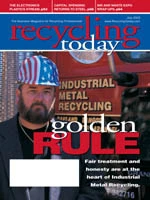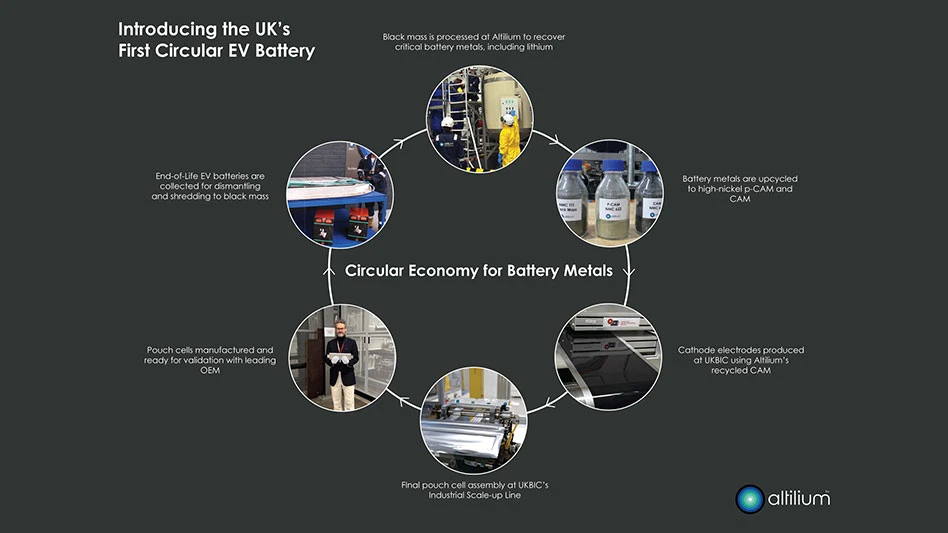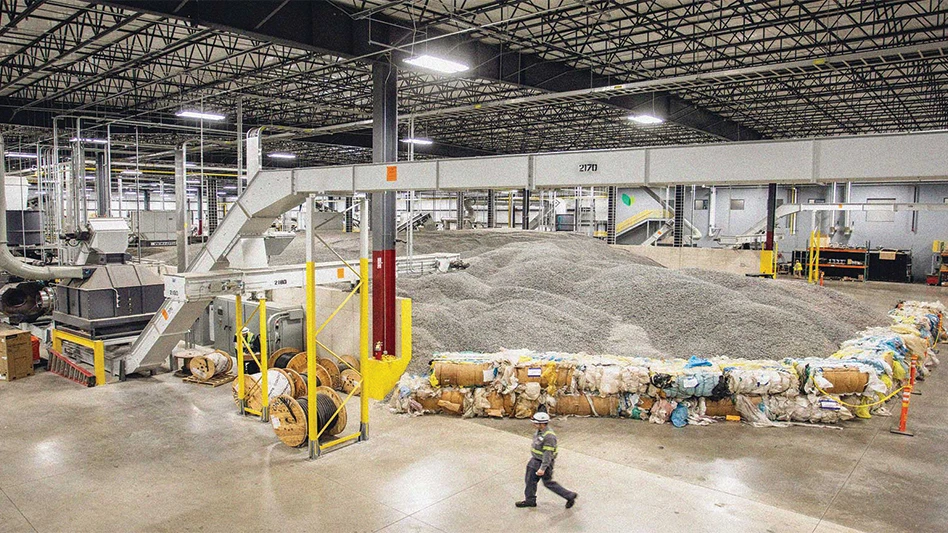It is a truism that uncertainty is not good for investment or business. And uncertainty over the near-term outlook of the world economy continues amid the unsettled climate in the Middle East.
As manufacturers, aluminum producers’ fortunes are tied to the larger economic picture. In this context, the tough times our industry has faced in the past two years is unsurprising.
Nonetheless, I remain optimistic that stability will return to the financial markets, and to the consumer and industrial markets our industry serves. When that occurs, it is essential that the aluminum industry be prepared to compete aggressively and effectively for its rightful share in these markets.
To do that, the aluminum industry must think deeply about how it might reposition itself. Personally, I believe we must take advantage of the growing worldwide interest in sustainable development to compete more effectively in a challenging new marketplace. But more on that later. First, what is the state of the aluminum industry?
GLOBAL PICTURE. An analysis of our industry’s global performance in 2002 shows a modest rebound over year-earlier results.
In 2002, total consumption for both primary and secondary aluminum increased an estimated 2.8 percent in our survey countries, excluding China, Russia and other nations from the former Eastern Bloc. These excluded countries are experiencing substantial growth in aluminum: 17 percent for China and about 10 percent for Russia.
Although 2.8 percent is below the industry’s long-term growth rate of 3.5 percent, it nevertheless represents a turnaround from 2001, when total aluminum consumption dropped some 6 percent.
Industry data from the first few months of this year suggests the potential for a continuing upturn in industry activity. The Aluminum Association’s new order index in February YTD measured 96.49, up 1.4 percent over the same period in 2002.
A survey of the broad economic indicators for the U.S. also suggests the potential for a modest uptick in activity for 2003 over 2002.
Gross domestic product (GDP) is expected to grow by 2.6 percent this year. While not approaching the GDP growth rates of the late 1990s, this is nonetheless higher than the 2.4 percent growth registered last year.
Industrial production is projected to grow by almost 2.2 percent this year after slumping by minus 1.1 percent last year. Bad as that was, it would have been considerably worse had not the auto industry been so aggressive in pushing domestic car sales.
U.S. builders are expected to start 1.67 million housing units this year. This is strong by most any standard except for the 1.7 million houses started in 2002.
What does this imply for our major markets in 2003?
MAJOR MARKETS FOR ALUMINUM. The extent to which consumer and business spending is being stifled by geopolitical uncertainties versus other secular factors is anyone’s guess.
Assuming that we see a reasonable resumption of growth in North America in the months following hostilities in the Middle East—and if we cautiously extrapolate deeper into this year—here is what we might expect going forward.
The prospects for aluminum increasing its share within these key markets over the short term are mixed. Within housing, for instance, vinyl siding and composite material are currently gaining at the expense of aluminum.
| NERVOUS ABOUT "TWITCH" |
|
In the never-ending debate of defining specifications within the Institute of Scrap Recycling Industries Inc. (ISRI) Scrap Specifications Circular there is a commodity that is often misunderstood and somewhat loosely defined. That item is "Twitch," which is technically defined as "Fragmentized Aluminum Scrap." There is nothing in the definition that says that the material must have been "floated" through a Heavy Media system, yet the internationally accepted nomenclature associates "Twitch" with a product derived through a heavy media system. Furthermore, the definition for Twitch has allowance of up to 3 percent free zinc. Now, I am not an operations guy, but if your media plant is putting out a light fraction that has up to 3 percent free Zinc, something is very wrong. Commonly accepted zinc levels for a floated Twitch product is less than 1 percent free zinc. Now enters Longthrow. This product actually more closely matches the actual definition of Twitch. This item will have up to the tolerated 3 percent zinc noted in the specification. Additionally, since the specification does not say that the material must be floated aluminum, Longthrow actually more closely approximates the current definition of Twitch. What to do? It had been suggested that a new item be defined within ISRI’s specifications defining what the world knows as Twitch and then make the "Longthrow" item take over the name Twitch. The problem with this is that there is an entire international community that thinks that Twitch is floated aluminum with a tolerance of 1 percent free zinc. A better solution would be to change the specifications of Twitch to meet the commonly accepted parameters of this grade of aluminum and then come up with a totally new "code word" for the "Longthrow" type of fragmentized aluminum. This then has led to a different type of dilemma, what to call this new commodity, sticking to the nomenclature established by ISRI and naming this new item with a "Tw" in the beginning of the code name. An initial suggestion is to call this new item "Twix." But it could be problematic to try and use this term within the international community and not get it confused with its cousin Twitch. We must remember that English is not everyone’s first language and that two words that sound so similar would be easily confused by our scrap brothers (and sisters) overseas, not to mention among traders from different regions of the U.S. The Random House Dictionary of the English Language has these suggestions for new "code words": Tweedle, Twain, Twang, Tweak (an okay choice), Tween, Tweeze, Twerp, Twirp (my personal favorite), Twiddle, Twig, Twill, Twist, Twit (a close second for me), Twirl, Twin and Twink. What this all comes down to is that if "perception is reality" then "Twitch" has already been redefined by those that buy it to be a "floated" 1% Zinc item, and this new commodity, Longthrow, should have a new "code word" that is defined separately. Author Randy Goodman is Director of Nonferrous Marketing at Hugo Neu Schnitzer in Jersey City, N.J. |
In the lightweight vehicle market this year, we can expect to see about 16.4 million unit sales, according to Global Insight’s March report. That number is slightly below last year’s level and I suspect may even be somewhat optimistic given the recent news out of Detroit. The better news in this sector is the growing use of aluminum in the North American transportation industry. On average, since 1990 aluminum’s use in cars has doubled while its use in light trucks has tripled. The average car now uses about 273 pounds of aluminum and the percentage continues to grow.
Turning to can sheet sales, we find a different situation: growth is stagnant and competition from plastic is fierce for what growth that does exist.
After all markets are considered, total consumption of aluminum in North America this year is expected to increase by about 3 to 4 percent, to about 10–10.5 million tons. While not breathtaking growth, there are certainly grounds for optimism looking ahead.
A VISION FOR OUR INDUSTRY. If my attitude toward our industry’s outlook can be categorized as "glass-half-full," I would quickly add that I don’t see our industry achieving its full potential without a vision and the commitment to translate that vision into action.
Establishing that vision and action plan, we must first recognize our fundamental challenge: Ours is a slow-growing, mature manufacturing industry that must adapt to and compete in a highly innovative, fast-paced global marketplace in which:
• Competition from other materials is keen.
• Traditional markets are under pressure.
• The need to adapt to new consumer applications and appeal to a kaleidoscope of changing tastes and preferences is constant. All of which prompts some serious questions:
• How do we prosper in this environment?
• How do we attract investment?
• How do we grow market share and fend off the challenge from competing materials?
ALUMINUM'S COMPETITIVE ADVANTAGE. To answer them I believe our industry must realize and develop its competitive advantage. I submit that one way we can do this is by positioning our product to take advantage of the rapidly developing sustainability drive. It is a natural partner to aluminum, in that our competitive advantage—recycling—fits perfectly with the sustainability concept.
Aluminum is the highest-value recovered material offering by far the greatest revenue stream of all recovered materials. In fact, were it not for the recycled beverage can, recycling would probably cease because it would no longer be remotely economic. Recycling one ton of aluminum cans yields approximately $1,150 of revenue—while recycling a ton of steel, glass, plastics or paper comes nowhere close to covering the average collection cost of about $200 per ton. Recycling is integral to our industry’s operation and its identity. No material has an identity so closely allied with a socially and environmentally beneficial attribute like recycling as does aluminum.
And yet the value of this identity may recede absent our industry’s renewed efforts to strengthen it. Aluminum can recycling rates have fallen from their all-time highs of several years ago and—while still far above the recovery rates for plastic and glass—the gap is closing.
The aluminum industry well knows that our metal is infinitely recyclable and that its value is such that it effectively subsidizes the collection of other materials in the waste stream. But research demonstrates that the public hasn’t a clue about this information. If the public is unaware of these attributes and/or does not attach importance to them, then the likelihood that they will purchase an aluminum product at least in part for its sustainable qualities is negligible.
CONVEYING THE SUSTAINABILITY MESSAGE. If we believe the concept of sustainable development will grow year after year, then as an industry we have a significant leverage point. And we know that a little knowledge goes a long way in persuading people of the many attributes of aluminum. Among these proven attributes are: Far less waste, energy savings, reduced environmental impact, and the conservation of natural resources—all attributes associated with sustainability.
If aluminum is to become favored as a truly sustainable resource, then the recycling attribute is likely to be the basis for that conviction. It provides us with that rarest of advantages: The opening to make a credible case about the benefits of using aluminum for the benefit of current and future generations.
For example: What if consumers knew that the 54 billion cans recycled in 2002 constituted a $750 million value? Or that recycling those cans saved energy equivalent to 15 million barrels of crude oil? Think of the relevance that such energy savings has to the sustainability issue.
Think of the impression on auto engineers, dealers, and buyers if we can raise awareness that every ton of aluminum replacing two tons of steel in automobiles reduces carbon dioxide emissions by up to 20 tons over the life of a vehicle. Or that aluminum offers substantial opportunity to reduce greenhouse gas emissions in the auto fleet.
Beyond its value to the environment and consumers, recycling is also good for our business. Scrap is 32 percent of total metal consumption. It would take 23 smelters the size of a modern-day 400,000-ton smelter to equal our industry’s consumption of aluminum scrap. That amounts to a $30 to $40 billion investment, not including the corresponding costs of bauxite and alumina facilities.
After all is said and done, recycling is an appeal to intelligence, resourcefulness and good business sense,.and no better illustration of sustainability exists than recycling aluminum.
The task we have now as an industry is to tie it all together for consumers. Aluminum alone is infinitely recyclable, provides the highest value, and its recyclability promotes sustainable development through energy and environmental advantages. This is true for the aluminum can as it is for aluminum automobile parts, aluminum building materials, and aluminum consumer goods.
Let’s not forget that recycling ties our product to a value important to almost everybody—their communities. In short, it is our brand. But, we are in danger of losing our brand. This is something our industry cannot afford.
ACTION TAKEN. They say that a mind is a terrible thing to waste. But so too is the loss of the value of a brand that, due to neglect, may lose its power to persuade people about what is most distinctive about our metal.
This would be especially regrettable now as the world begins to focus on sustainability. The linkage is incredibly strong with our products.
With this in mind, the Aluminum Association has launched an initiative to take our industry’s sustainability message to consumers, so that they can make a fully informed decision about the materials they purchase. An executive committee has formed for the express purpose of:
1. Turning recently completed consumer research into actionable recommendations;
2. Developing core messages we can use with maximum impact that will perhaps broaden our recycling message into a new communications platform for talking more comprehensively about a sustainable aluminum industry; and
3. Producing the marketing tools to carry this theme forward.
The Aluminum Association will report on the progress of these initiatives and the resulting recommendations formulated by the executive committee.
The intrinsic value of aluminum is the heart of our competitive advantage, and of how we provide sustainable development.
For the benefit of both our industry and the planet that we all inhabit, it is our obligation to bring aluminum’s sus-tainability message to the wider marketplace.
The author is executive vice president of Alcan Inc., Montreal and Cleveland, and chairman of The Aluminum Association. This article first appeared in the Association’s Aluminum Now magazine in the May-June 2003 issue.

Explore the July 2003 Issue
Check out more from this issue and find your next story to read.
Latest from Recycling Today
- Returpack reports increased DRS activity in Sweden
- Trade groups align against European export restrictions
- Construction, auto sectors show mixed signals
- Politics in Turkey threaten recycled steel outlet
- Toppoint Holdings expands chassis fleet
- Lego creates miniature tire recycling market
- Lux Research webinar examines chemical recycling timetables
- Plastics producer tracks pulse of wire recycling market





